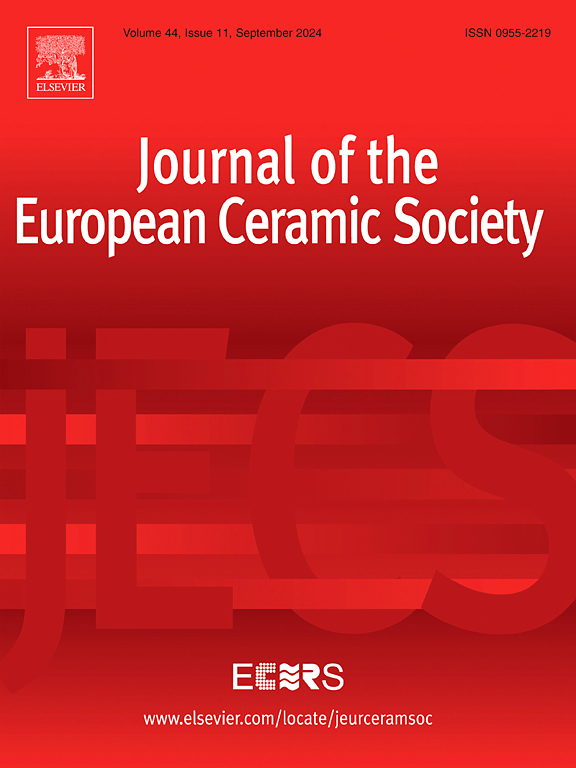富硅涂层SiCnw/PyC-C/C-HfC-SiC复合材料的制备、力学性能和烧蚀性能
IF 6.2
2区 材料科学
Q1 MATERIALS SCIENCE, CERAMICS
Journal of The European Ceramic Society
Pub Date : 2025-06-06
DOI:10.1016/j.jeurceramsoc.2025.117609
引用次数: 0
摘要
采用薄膜沸腾化学蒸汽渗透(FBCVI)和气态硅渗透(GSI)相结合的方法,制备了具有富硅涂层的SiC纳米线/焦碳(SiCnw/PyC)增强C/C- hfc -SiC复合材料。FBCVI构建的核壳结构可以增强基体,提高导热性,有利于制备富硅涂层。在2.38 MW/m2热流下烧蚀后,复合材料的线性烧蚀率和质量烧蚀率分别为1.02 μm/s和0.25 mg/s,具有良好的抗烧蚀性能。在低烧蚀温度(1885°C)下,核壳结构和富硅涂层是理想的,促进形成致密的Hf-Si-O层,具有小晶粒增韧的修复性能。本研究提供了一种新型复合工艺制备核壳结构增强热防护复合材料。本文章由计算机程序翻译,如有差异,请以英文原文为准。
Fabrication, mechanical properties and ablation performance of SiCnw/PyC-C/C-HfC-SiC composites with a Si-rich coating via film boiling chemical vapor infiltration and gaseous silicon infiltration
SiC nanowire/pyrocarbon (SiCnw/PyC) strengthened C/C-HfC-SiC composites with a Si-rich coating were prepared efficiently by film boiling chemical vapor infiltration (FBCVI) in conjunction with gaseous silicon infiltration (GSI). The core-shell structure built by FBCVI could reinforce the matrix, improve thermal conductivity, and facilitate the preparation of the Si-rich coating. After ablation at a heat flux of 2.38 MW/m2, the composites demonstrated excellent ablation resistance, whose linear and mass ablation rates were 1.02 μm/s and 0.25 mg/s. The core-shell structure and the Si-rich coating were desirable for a low ablation temperature (1885 °C), promoting the formation of a dense Hf–Si–O layer with repairing properties toughened by small grains. This study offered a novel combined process to prepare thermally protective composites strengthened by the core-shell structure.
求助全文
通过发布文献求助,成功后即可免费获取论文全文。
去求助
来源期刊

Journal of The European Ceramic Society
工程技术-材料科学:硅酸盐
CiteScore
10.70
自引率
12.30%
发文量
863
审稿时长
35 days
期刊介绍:
The Journal of the European Ceramic Society publishes the results of original research and reviews relating to ceramic materials. Papers of either an experimental or theoretical character will be welcomed on a fully international basis. The emphasis is on novel generic science concerning the relationships between processing, microstructure and properties of polycrystalline ceramics consolidated at high temperature. Papers may relate to any of the conventional categories of ceramic: structural, functional, traditional or composite. The central objective is to sustain a high standard of research quality by means of appropriate reviewing procedures.
 求助内容:
求助内容: 应助结果提醒方式:
应助结果提醒方式:


